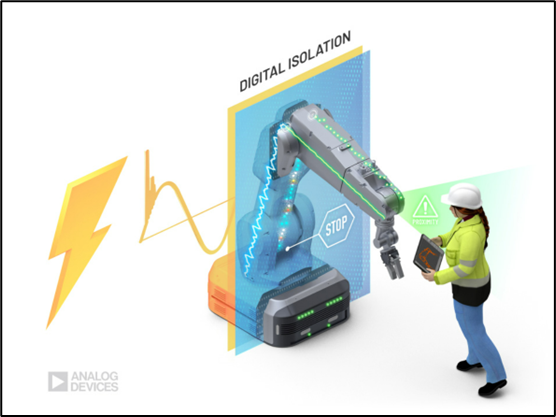By Conal Watterson & Brian Condell
This blog focuses on the distribution of IO modules within factories. Following on from the previous blog post Changed Your Mind? No Problem, which looked at flexible manufacturing within smart factories.
Distribution of IO modules, relocating them closer to the sensor/actuator with remote IO, requires smaller enclosures to increase IO channel counts. Efficient power management and integrated solutions are key to enabling higher-density circuit designs for these compact remote IO modules. Here we will explore the various solutions available to manufacturers for both power and isolation within remote IO modules.
Power Management within Remote IO Modules
Typically, industrial control modules including remote IO will be powered by a 24V DC supply. Within the module, appropriate power components must be selected to protect the system from power supply faults and generate the appropriate supply rails needed for processing, communication, and analog front end. The latter typically includes a negative supply rail, increasing circuit complexity such as external components needed to regulate.
Compact module form factors drive minimal use of PCB area, so fewer, smaller external transformers, inductors, capacitors, resistors, and diodes are preferred. Increased circuit density also requires higher efficiency solutions, so that power dissipation is minimized (large PCB areas allow heat to dissipate more easily, but in a smaller area, compact devices simply can’t run as hot).
Just 3 mm2 is needed for the MAX17523A current limiter, which offers high robustness to overcurrent and overvoltage. The solution space is minimized too with the MAX20075 buck regulator, with integrated FETs, providing the lower voltage supply needed for the communications and processor.
Isolation within Remote IO Modules
Isolation barriers within remote IO modules are critical as they must allow information to travel across the barrier while at the same time preventing any current flow to protect both humans and equipment, eliminate grounding problems, and improve system performance (Figure 1).

Figure 1 Isolation
This isolation can be channel-to-channel isolation or group/bank isolation depending on the configuration of the remote IO module. When designing channel-to-channel isolated modules, the main trade-off is usually between power dissipation and channel density. As module sizes shrink and channel densities increase, the power dissipation per channel must decrease to accommodate the maximum power dissipation budget for the module.
Standalone isolators can be used if additional isolation channels need to be added to the design, or for designs where an isolated power supply is available so an integrated solution isn’t required. The ADuM340E/ADuM341E/ADuM342E quad-channel digital isolators based on Analog Devices, Inc., iCoupler® technology integrate back-to-back monolithic air core transformer technology for high levels of EMC and isolation robustness. To extend to six channels of isolation, these can be complemented by the ADuM320N/ADuM321N dual-channel digital isolators. Compared to the previous generation of iCoupler® isolators, these parts allow faster more precise transfer of information, at lower power and with lower emissions.
Best of Both Worlds / Integrated Solution
To address the above space constraints, there is an integrated Power management and isolation chip that can be used. ADP1034’s integrated power and data isolation (Figure 2) eliminates the use of an optocoupler and the associated problems by integrating iCoupler technology for feedback, which reduces system cost, PCB area, and complexity while improving system reliability without the issue of CTR degradation. The isolated micropower management unit (PMU) combines an isolated flyback and a DC-TO-DC regulator providing two isolated power rails all in a compact form factor, including the negative supply rail required by the AD74115H. For communication, it contains four high-speed serial peripheral interface (SPI) isolation channels as well as three slower channels for GPIO (General Purpose I/O) control signals.
This part optimizes low-power solutions by the introduction of an integrated PPC (Programmable Power Control) functionality. PPC gives the user the ability to adjust the VOUT1 voltage (AD74115H AVDD supply voltage) on demand. This method minimizes power dissipation in the module under low load conditions, particularly in current output modes.

Figure 2 ADP1034’s Integrated Power and Data Isolation
References

